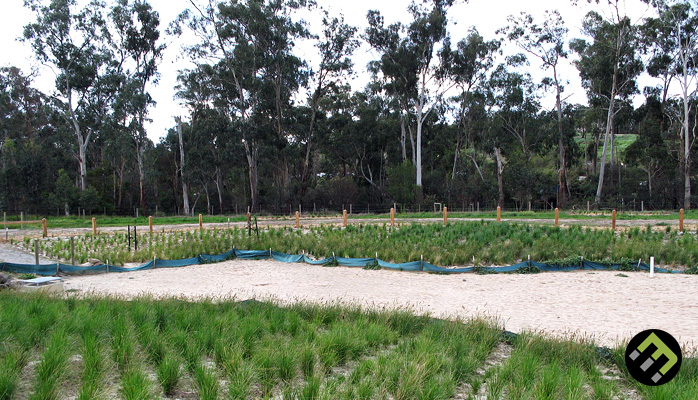Restoration Ecology and Ecological Restoration

You might be wondering: what is restoration ecology? The term itself might sound simplistic, but restoration ecology is a nuanced, layered topic – and a field of study! It is the scientific study of ecological restoration, how it is carried out and what it entails. It studies in great detail how science, and practitioners of ecological practices, can help an ecosystem recover from the impacts of climate change, promoting environmentally sustainable work practices.
The impact of this is such that the UN has declared the coming decade to be the Decade on Ecosystem Restoration, aimed exclusively at restoring degraded and ravaged ecosystems. In doing so, an understanding has been established of the inter-related nature of ecosystems and society– the mission is also geared towards improving food and water supply and replenishing biodiversity.
As climate change and environmental change rightfully dominate our headlines, an understanding how to combat it the most crucial topic at hand.
What is restoration ecology?
With rising sea levels across the globe and unparalleled yet expected heatwaves in every part of the world, the impacts of climate change are plain to see – and that is why understanding restoration ecology is so important.
Ecological restoration involves taking care of the environment in ways that will reduce the significant long-term impacts climate change has had on all life worldwide, not to mention on the planet itself. The science also deals with finding ecosystems that have been ravaged or damaged, especially by human activity.
The excessive, unprecedented use of fossil fuel, coupled with the significant worldwide destruction of forest cover, has meant that the direct impact of climate change on day-to day-life is being felt now more than ever. Many countries also have very lax regulations on environmental policy, something that has now been consistently highlighted in the news thanks to young activists around the world. Much ink has been spilled over ecological restoration and management in academia and the press – all for good reason.
Why is restoration ecology critical?
Within restoration ecology, scientists and experts study an environment from its inception to where it is today. Primarily and fundamentally, they first study what exactly is impacting, or disturbing, the natural balance of a specific ecosystem. Some environmental changes occur in ecosystems in a natural way, each to varying degrees. In the modern world, however, the most significant, indeed the quickest impact of climate change, has been anthropogenic– caused by human action. Part of the reason the field of restoration ecology is so important is because it enables and furthers understanding of the differentiation between human impact on the environment and those that naturally occur. It is here that the knowledge of how to reverse, or at the very least, mitigate those effects would occur.
Part of the field of study is understanding how different ecosystems and their parts affect and involve the larger system as a whole. Today, these same ecosystems are broken up into smaller fragments as a result of human activity, increasing the likelihood of these fragments becoming extinct– in turn, answering the question of why restoration ecology is important.
Ecological restoration and management are very needed, in terms of awareness but also of tangible, real action to reduce the ill-effects humans have and continue to have on the environment today. It is in applying the field of study to practical action that several ecological restoration projects are being undertaken today, across countries and geographies. This field of study is even more crucial than it was two decades ago, to which end several individuals and corporates have taken on restoration ecology projects that will help the planet combat climate change and its ill-effects.
How do individuals, governments and corporates fit in?
Ecological restoration is a many-pronged entity. It involves action at many levels, ideally on a simultaneous timeline, for the most significant environmental improvement.
Individual efforts involve even seemingly ‘small’ actions, such as not littering, moving to reusable material, and making changes in our everyday lives that, together and multiplied across the billions inhabiting the earth, will definitively impact the environment. On a governmental level, it involves working closely with those studying and working in the field of restoration ecology. This is to enable and turbo-charge changing laws and making new legislations, outlawing practices that have an ill-effect on the environment.
One such example of restoration ecology is in tree planting undertaken en masse, either by an individual or a group of individuals, or by corporates as part of their extensive CSR initiatives. Corporate tree planting, because it is on a more extensive level, provides a broader positive impact on the environment.
EcoMatcher and companies of the like are enabling individuals and corporations to step up their restoration game by indulging in corporate tree planting as part of successful employee engagement programs or in a bid to promote environmentally sustainable practices in the workplace.
The final word
Rising temperatures and mediocre air quality are not the only reasons for the need for restoration ecology– intergenerational justice and the mere existence of the planet is also a high-stakes reason to get involved. The younger generation is promoting the understanding of the effect humans are having in an accelerated way on the environment today– however, it doesn’t need to be left in their hands to fend for their future. Ahead of the United Nations’ Decade on Ecosystem Restoration, it is crucial, now more than ever, that we understand ecological restoration, implement its principles in practice and look forward to reducing the impacts of climate change.

